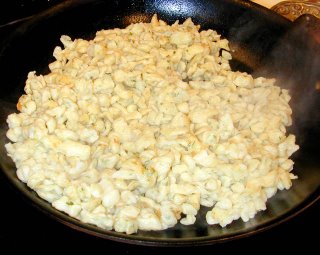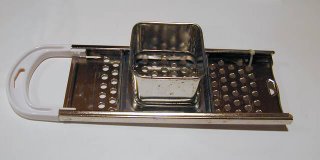
Valpolicella – It’s not what you think!
Back in my college days, Valpolicella was one of those cheap Italian wines that came in 1.5L bottles. It was innocuous, but drinkable and at least it didn’t cause the killer hangovers that were associated with the other student wines of the time. Today, while mass market versions still exist, Valpolicella can be a good to great wine. Made Corvina and Rondinella are the primary grapes, although others are blended in as well. Basic Valpolicella is a lighter wine with bright red fruit flavors and a wonderful nose that sometimes has a scent of rose petals. Good bottles can be found in the $10 to $15 range. It is a good, multipurpose food wine that is great with appetizers (and not surprisingly, antipasti) and pastas with tomato sauce. A few recent favorites are:
- Allegrini Valpolicella Classico – A good basic Valpolicella from a great producer
- Tommaso Bussola BG 2003 – A well-made lighter wine with faint rose petal on its nose
- Tommasi Rafael Valpolicella Classico Superiore 2001 – An earthier style with cherry notes in the finish
- Zenato Superiore Valpolicella Classico 2001 - Slightly fruitier than the Tommasi with a mid palate finish of strawberry fruit
At the other extreme, are the Amarone wines, officially called Amarone della Valpolicella or Recioto della Valpolicella. These wines are made with grapes that have been allowed either on the vine or on straw mats. Reducing the water in the grapes, concentrates the flavors and increases the level of sugars (although Amarone is fermented to dryness). The result is a high alcohol wine of stunning depth, richness and complexity. Amarone is a spectacular, but expensive wine that will merit its own blog post in the future. For our purposes today, however, we’ll consider how Amarone influences and enriches more standard Valpolicella wines.
A new style of Valpolicella has evolved, where basic Valpolicella is blended with some percentage of wine prepared in the Amarone style, or processed “Ripasso” style, where the Valpolicella is vinified in a second fermentation over wine-drenched skins and pulp leftover from Amarone production. The result is a deeper, richer and more powerful Valpolicella that can stand up to more highly flavored dishes and is sufficiently nuanced to be an enjoyable wine on its own. These wines typically fall in the $18 to $30 range. Top producers include Allegrini, Bertani, Tommaso Bussola, Le Ragose, Masi, Speri and Zenato. Personal favorites include:
- Allegrini Palazzo Della Torre Valpolicella 2001 – A great price performer and a perpetual favorite when I serve it to friends. It’s been called a “baby Amarone.”
- Zenato Valpolicella Ripassa 2001 – A rich, silky and attractive wine with a great long finish. The 2003 is recommended as well.
- Tommaso Bussola TB Valpolicella Classica Superiore 2000, 2001, 2003 – Wow! These wines are Bussola’s higher end bottling and are unbelievable in power, complexity and shear enjoyment. Very Amarone-like. They are expensive (up to $50/bottle), but worth every penny.





